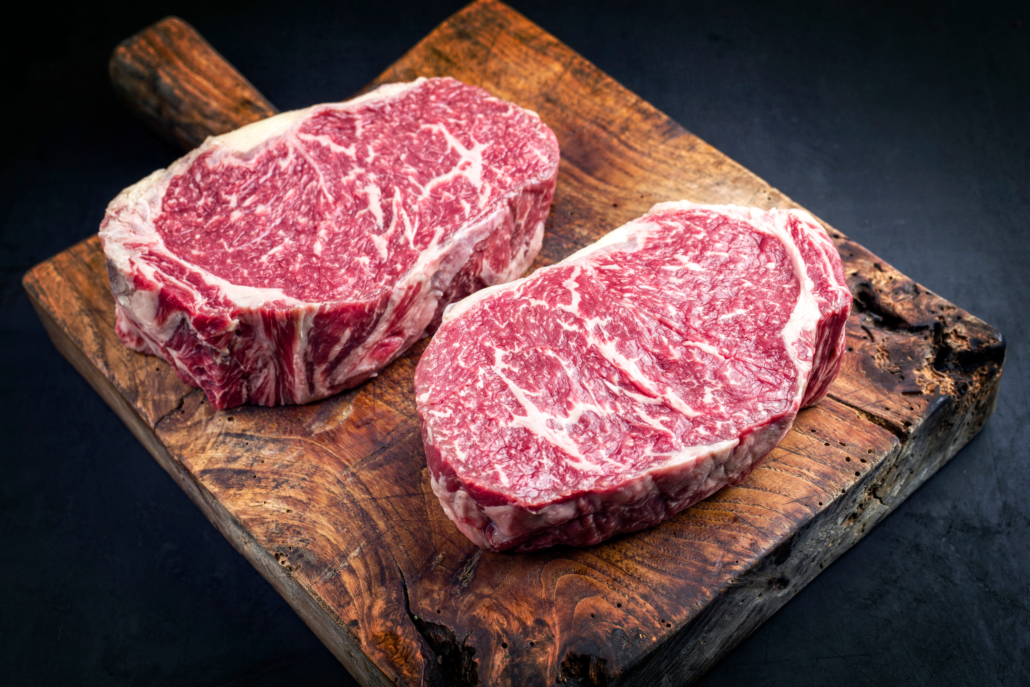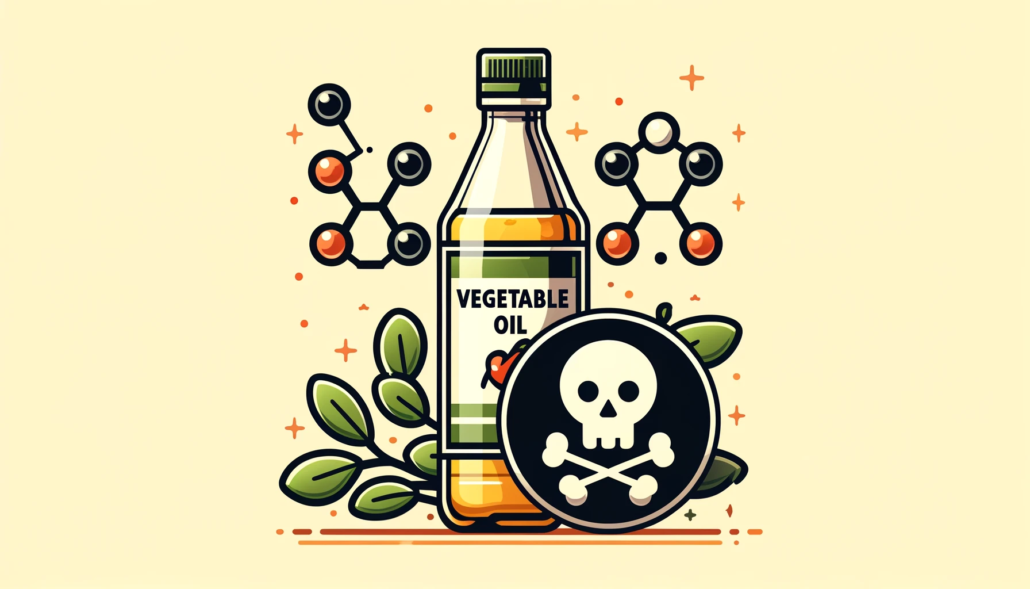We include products in articles we think are useful for our readers. If you buy products or services through links on our website, we may earn a small commission.
Are Humans Supposed to Eat Meat?
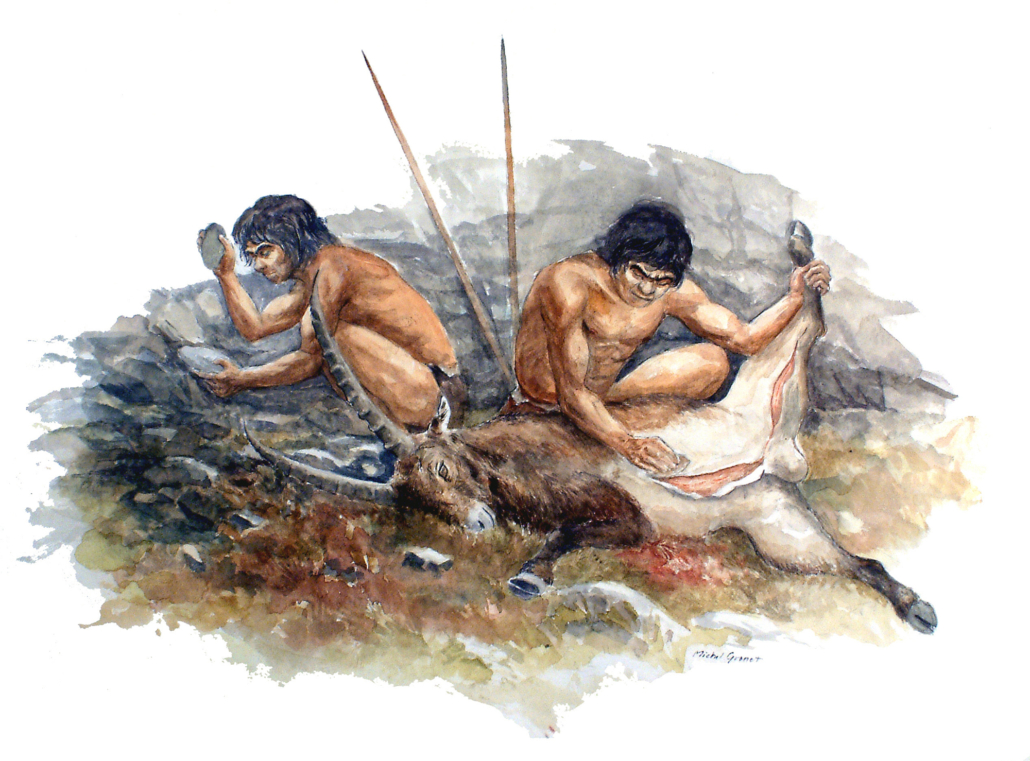
Humans have been consuming meat for hundreds of thousands of years. In fact, it was our pre-human ancestors’ ability to scavenge and then hunt meat that provided the nutrients that fueled the rapid growth of our brains, separating us from other apes.
However, since the 1960s, there has been a loud anti-meat movement trumpeting bogus science warning against saturated animal fat and promoting a plant-based agenda. Amidst all this anti-meat noise, you may be wondering, are humans supposed to eat meat?
In this blog post, we’ll look at the evolutionary evidence showing that yes, not only are humans supposed to eat meat, we are optimized for it.
Table of Contents
When Did Humans Begin to Eat Meat?
Six million years ago, primates migrated from tropical forests to vast grasslands called savannahs. But these ancient expanses were much more humid and marshy than they are today, creating an environment that provided fruits and edible leaves year-round.
Then around 3 million years ago, major climate changes dried out the savannah. With the moisture went the abundance of editable vegetative matter.
Though many species were wiped out, others adapted, including our earliest hominid (pre-human) ancestors. What allowed them to adapt was a major shift from eating plants to eating meat.
In parts of Africa, archaeologists have discovered telltale butchery cut marks on bones dating back 2.6 million years.
So if we’re looking for an answer to the question of when humans started eating meat, we know that it was at least 2.6 million years ago.
Eating Meat Made us Human
Not only did our ancestors adapt to climate catastrophe by learning how to eat meat, but this adaptation is also what made us human.
It is true that some small-brained primate ancestors captured small, lean prey that supplemented a plant-based diet. But human evolution took a different route as we developed the techniques, tools, and physical adaptations to scavenge, hunt, and thrive on huge, fatty, incredibly energy-rich, and nutrient-dense animals.
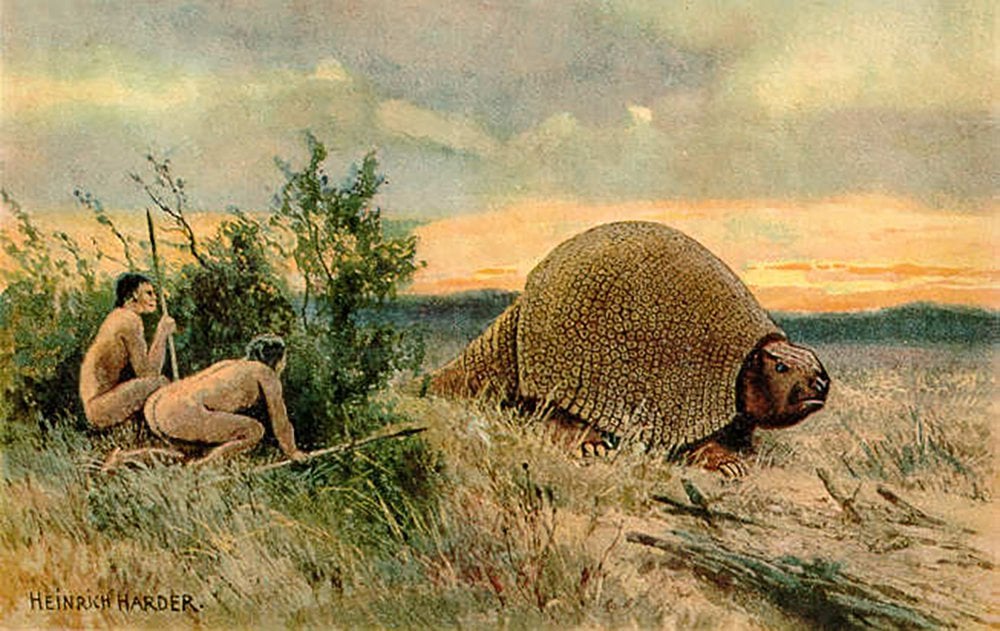
It is important to note that for early humans, the earth was teeming with giant animals called megafauna. These animals included mastodons twice as large as elephants, twenty-foot tall tree sloths, 1200 lb armadillos, and 2000 lb chinchillas.
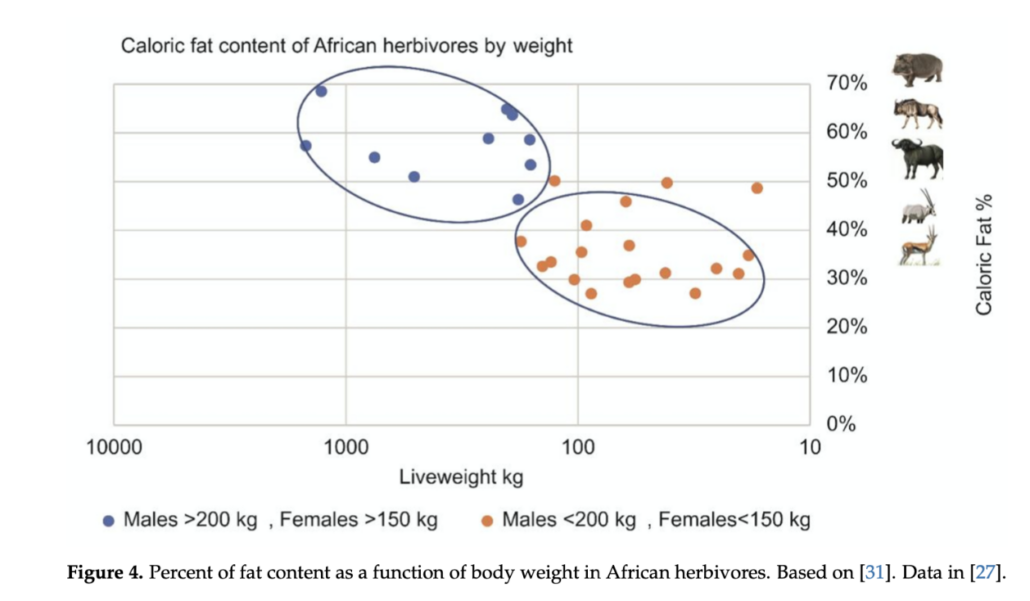
The bigger an animal is, the more fat it contains, proportional to protein. This calorically dense and vitamin-rich fat fueled our rapid brain growth.
| Macronutrient | Calories per gram |
| Fat | 9 |
| Carbohydrates | 4 |
| Protein | 4 |
Carnivore diet enthusiast Amber O’Hearn points out the homo-predatory pattern is “fat-seeking.” Fat is responsible for human brain growth, the related explosion in intelligence, physical adaptations to using tools, and increased focus on hunting and consuming meat.
We Didn’t Just Eat Meat. We Ate Only Meat
Numerous lines of evidence suggest that humans aren’t just supposed to eat meat, but that for nearly 2.5 million years, we were hyper-carnivorous apex predators a diet that was nearly exclusively meat!
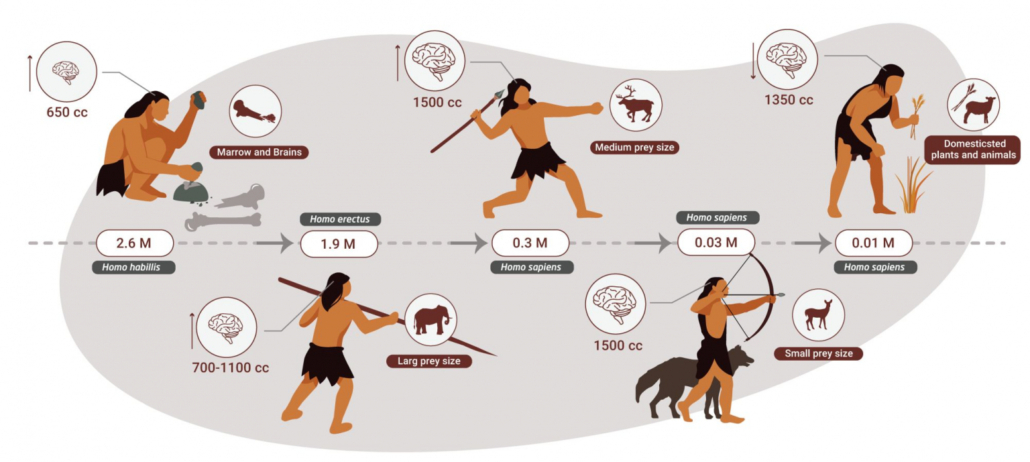
Source: Dr Miki Ben Dor
The caloric return from hunting megafauna was so much greater than plants that it wouldn’t make sense to waste energy on plant foods.
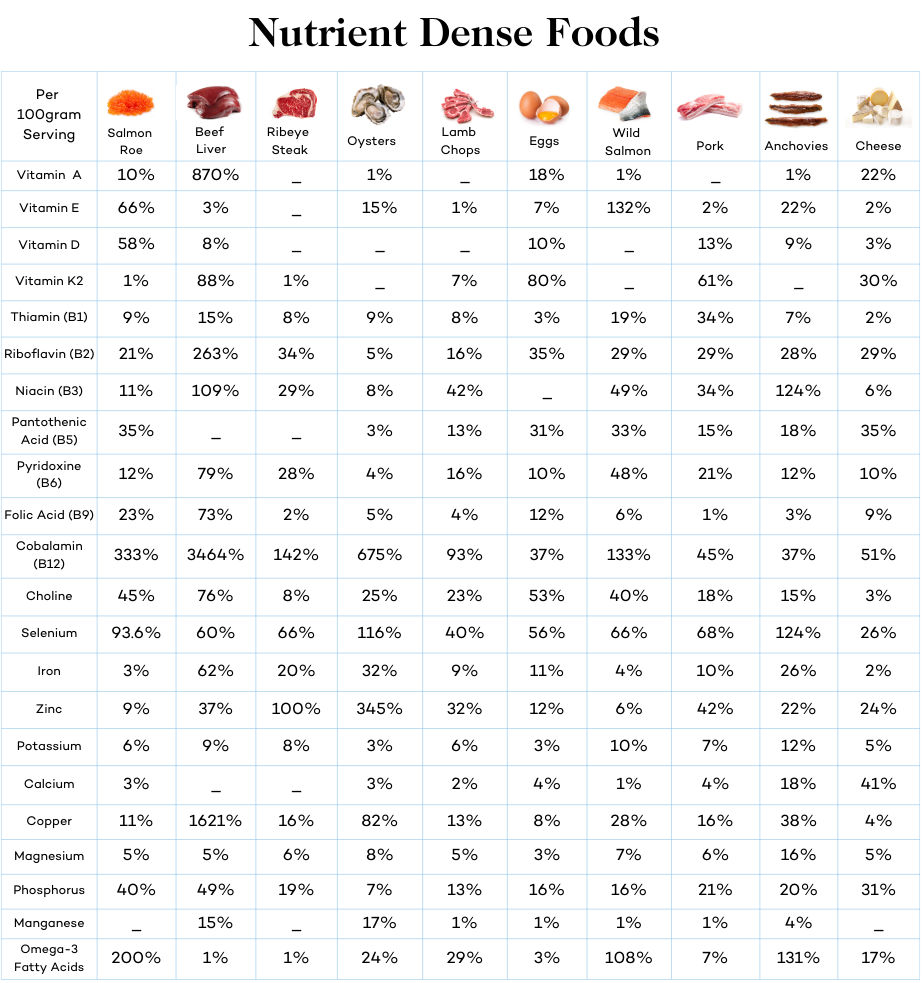
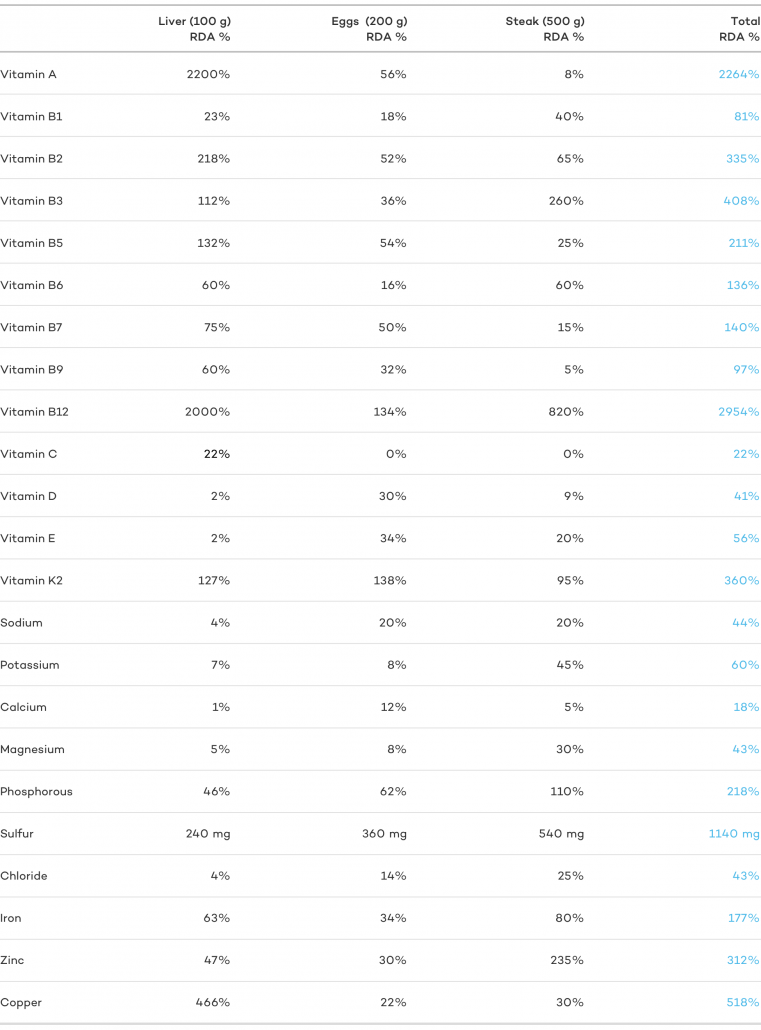
It wasn’t until the extinction of megafauna due to hunting that humans gradually introduced plant foods into their diets.
Then, only 8500 years ago, humans domesticated both plants and animals, settled down, and to the detriment of our health, became farmers.
But this change in how we get our meat in no way suggests that we aren’t supposed to eat meat.
In fact, the agricultural revolution is widely considered a catastrophe for human health. We got smaller, sicker, more diseased, and our brains shrunk.
Now, let’s take a closer look at some of the main lines of evidence showing that humans are especially designed to hunt and eat meat.
Percussion Tools Unlocked Meat and Made us Human
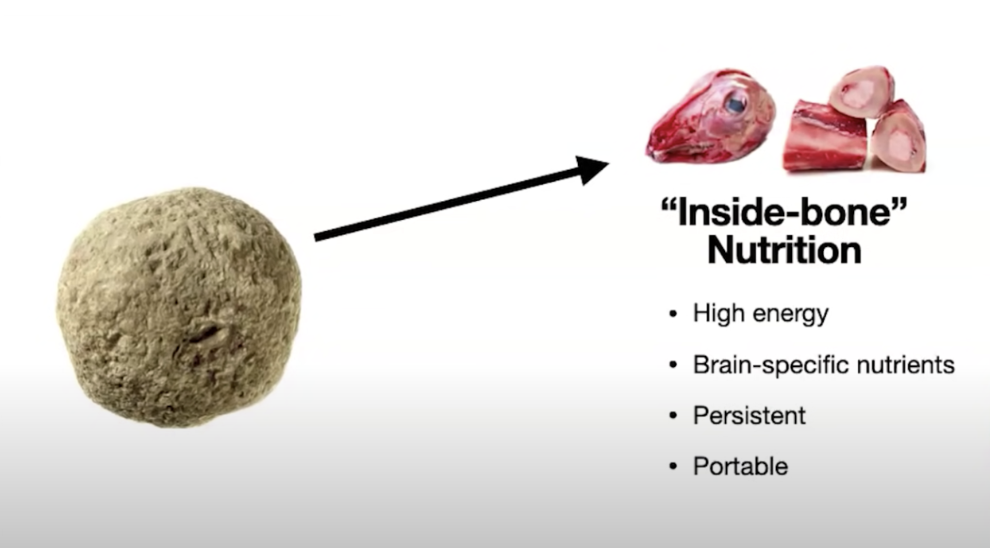
Percussion tools are stones that our earliest human ancestors used to smash open bones and skulls and consume the nutrient-dense brains and marrow. You don’t need percussion tools to harvest berries.

Source: Smithsonian Museum
These nutrient-dense bone meats from large animals were inaccessible with teeth and claws. Percussion tools unlocked these high-fat meats loaded with brain-specific nutrients. These bone meats are also protected from bacteria, so they remain safe to eat for longer periods of time. This allowed early humans to transport these foods to places where they would be safe from other predators.
The Human Body is Designed to Eat Meat
The story of humanity begins with the use of these tools. In fact, research suggests that the action of gripping and smashing is the evolutionary force that selected for the exact shape and strength of human hands.
With the advent of percussion tools, we begin to see that the human body is designed to eat meat.
The ability to use percussion tools arose with physical adaptations that allowed our ancestors to carry heavier loads of meat and bones further distances.
Percussion Tools to Hunting Tools
Using percussion tools fractures them into sharp flakes. These pieces of flaked stone became the first butcher knives that allowed early humans to hunt and prepare meat more thoroughly.
Eating Meat Fueled Rapid Brain Growth
Scavenging and then hunting provided early humans with nutrient-dense fats, organ meats, and protein loaded with brain-specific nutrients.
This higher quality fuel allowed homo erectus to eat less plant fiber which is bulkier than meat, leading us to evolve smaller guts.
With less energy demanded by our gut for digestion, more energy was free to fuel our brains.
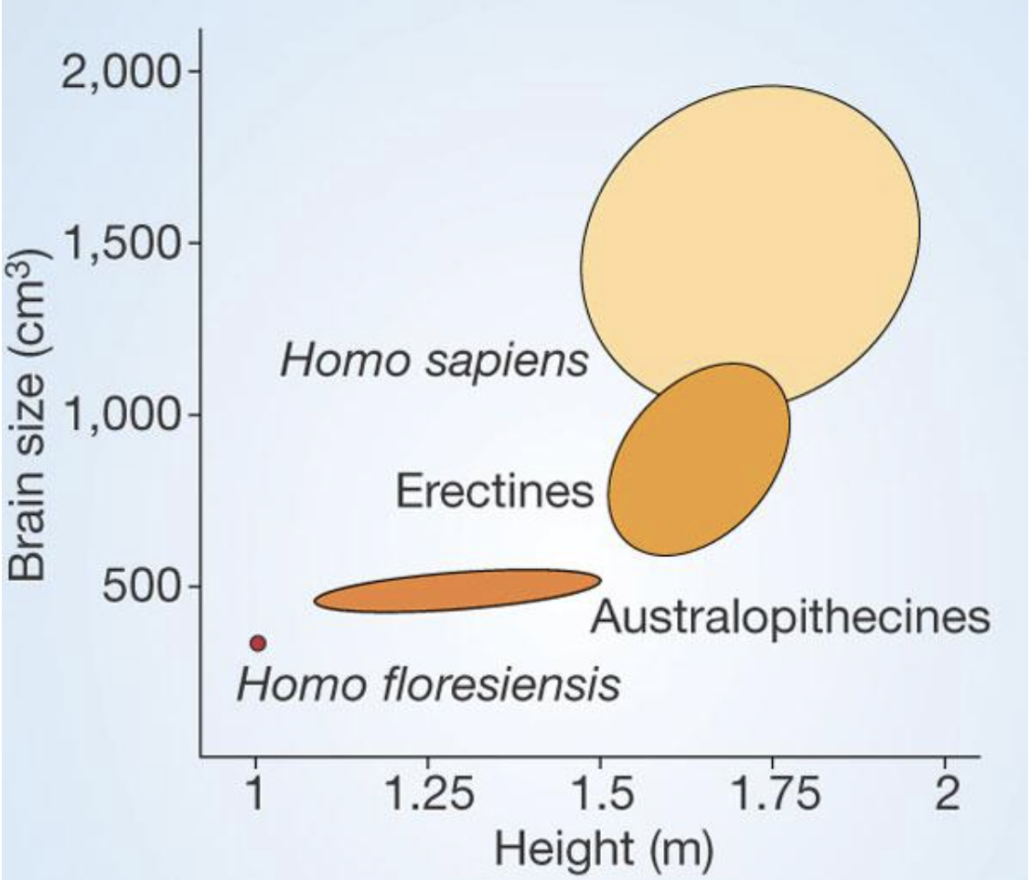
The results of this evolutionary split are apparent in the fact that the human brain requires a whopping 20 percent of our energy when resting. While an ape’s brain requires only 8 percent.
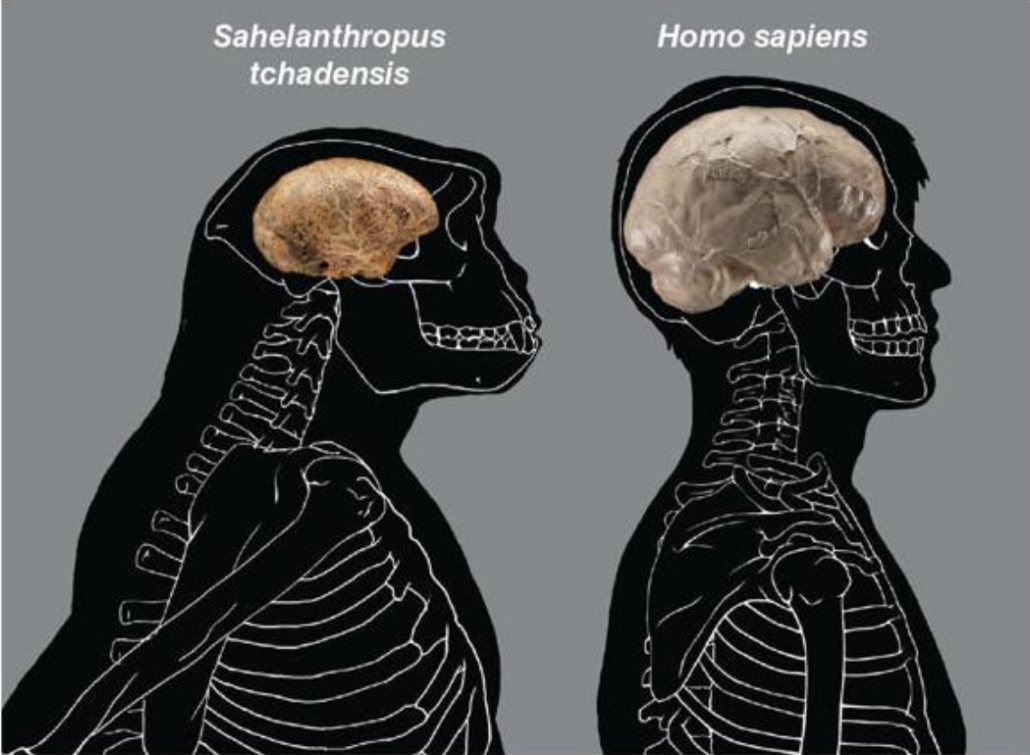
Illustration by Karen Carr Studios; endocasts from Smithsonian’s Human Origins Program.
Across primate species, the larger their brain, the more energy-dense the food they eat. Humans have the largest brains of all primates because we targeted the highest density food on earth–meat from big fatty animals.
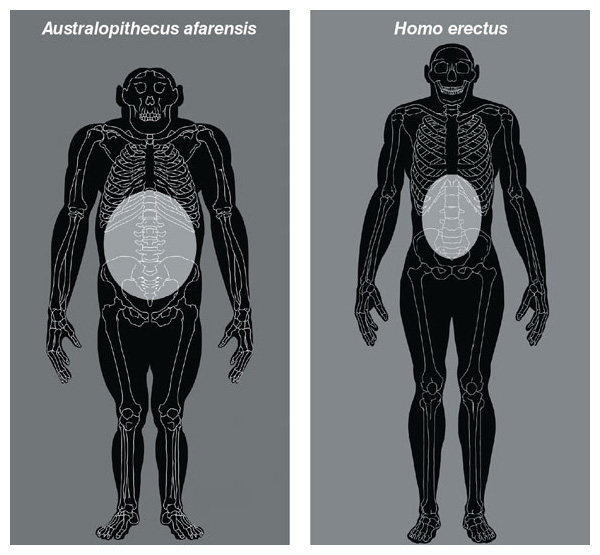
Image by Karen Carr Studios, courtesy of the Smithsonian’s Human Origins Program
We also see that during the end of the Pleistocene era (around 11,700 years ago), the human brain shrunk alongside the decline in megafauna.
At the same time, isotope evidence shows that this was when humans began eating more plants. Our ancestors didn’t choose to start eating plants; we were forced to. But we modern humans have a choice.
The Human Body is a Meat Hunting Machine
In addition to our grip, scavenging and hunting animals are selected for adaptations specific to eating meat like throwing spears and running long distances.
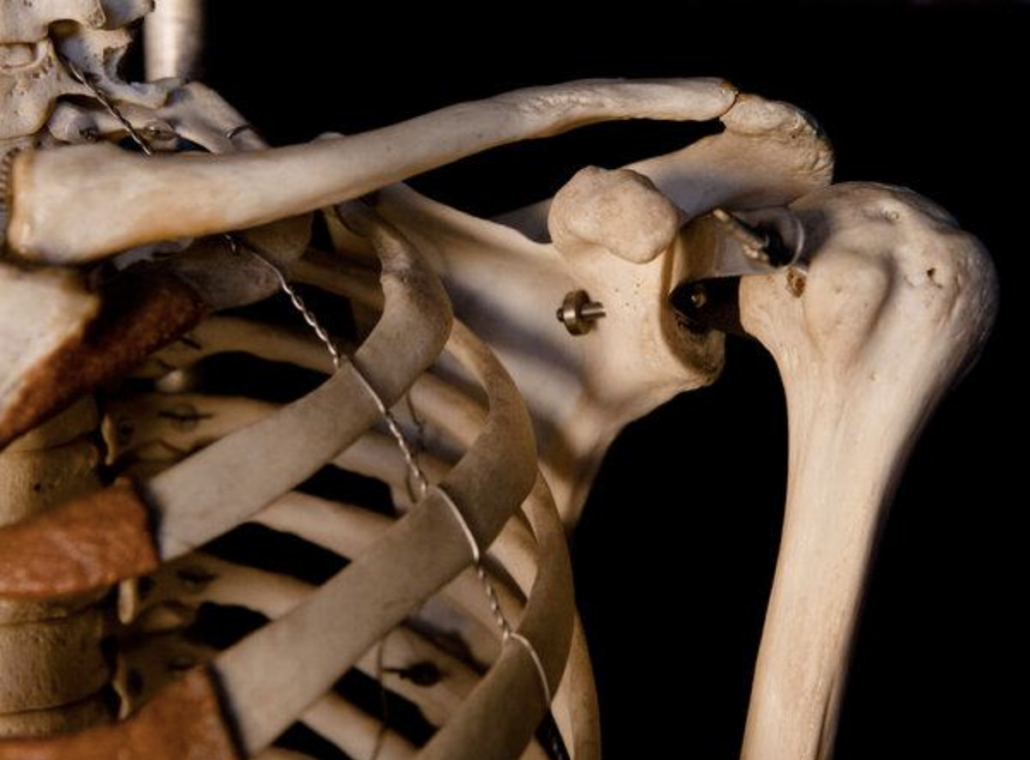
Image from the Smithsonian’s Human Origins Program
The human shoulder (above) allows the arm to hang freely and enables us to flex the arm at the elbow and easily perform tasks in front of us, like throwing and thrusting spears and using tools to butcher meat.
The ape shoulder (below), by contrast, allows for a different range of motion and is more suited to hanging from trees, where they are safe from carnivorous predators–like lions, and humans!

Image from the Smithsonian’s Human Origins Program
We also see these adaptations for eating meat in our springy Achilles tendons, stout leg joints, hairlessness, and a tendency to sweat. Taken together, these adaptations make us able to run long distances across hot savannah while dissipating excess heat.
Our ability to run is another uniquely human quality that tells us that we are supposed to eat meat.
Compared with cheetahs and other predators, we’re terrible at sprinting. But like hyenas and other scavengers, we’re great endurance runners over long distances.
This ability allowed us to chase prey to exhaustion and to beat other scavengers to the site of kills that we would identify by flocks of vultures on the horizon.
The Human Digestive System is Meant for Meat
We see the human adaptation from plant-based omnivores to fat-based meat-eaters reflected clearly in the development of our digestive systems.
All Animals are Fatavores
For both herbivores and carnivores, fat is a primary fuel source. Cows, gorillas, and other herbivores all have long, complex digestive systems that ferment plant fibers into fat.
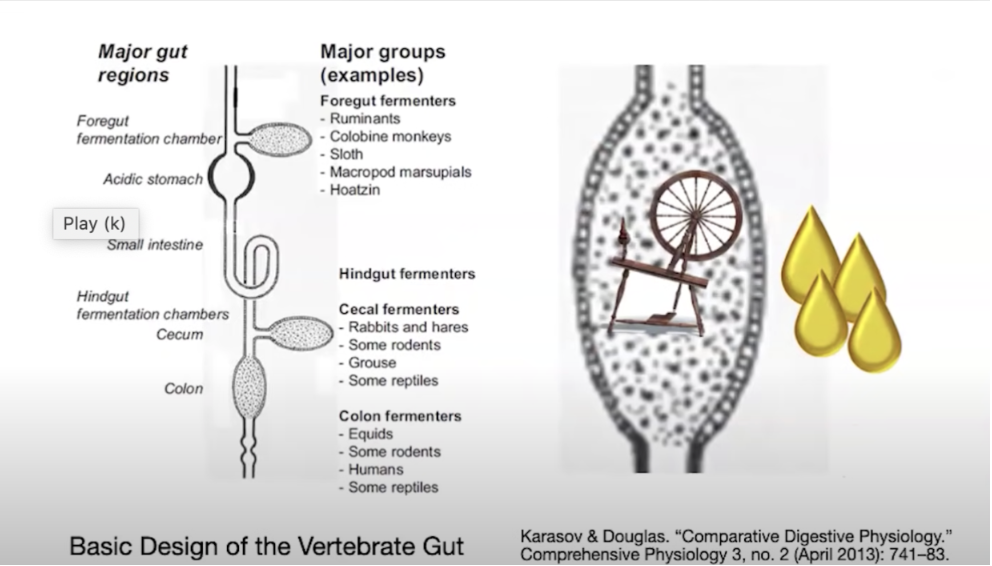
Meat eaters like humans and lions do not have this ability to turn fiber into fat. And we don’t need to because we are supposed to get our fat from the meat of other animals.
Our closest primate relatives have more than 50% of the digestive tract devoted to the colon and cecum. In contrast, humans have a much smaller colon and a very small cecum.
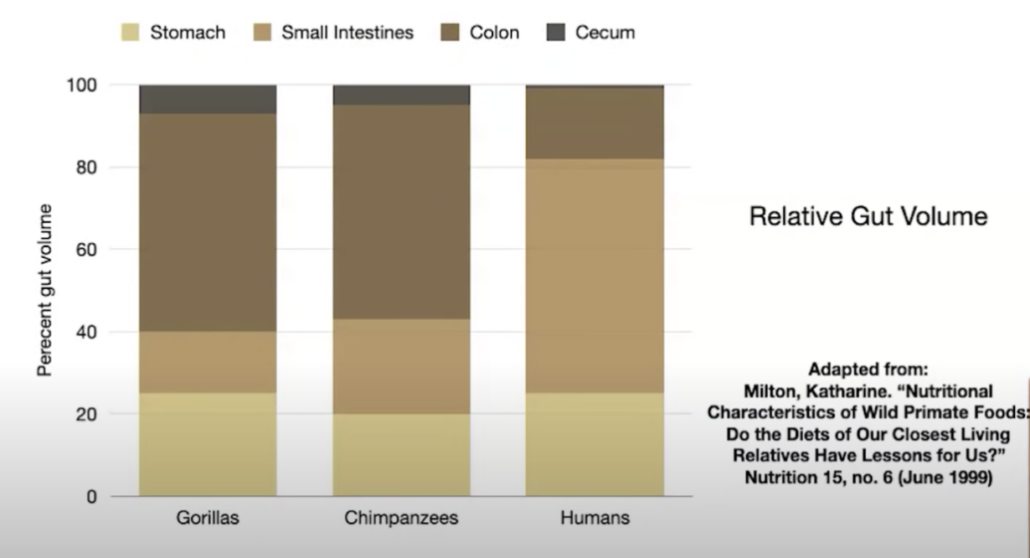
These physiological changes demonstrate a species-wide commitment to obtaining most of our nutrients from sources that are not fibrous–i.e., from meat, not plants.
In other words, when we found out how to feast on animal fat, we lost our need and, therefore, our physiological ability to turn plant matter into fat.
Without the ability to digest fiber into fat, plants have little nutritional value for us unless we’re eating a ton of fruit. But humans evolved on grassy plains and not in the jungle. Our access to fruit would’ve been extremely limited. Meanwhile, the meat of large herbivores was abundant.
Stomach Acidity
Carnivores throughout the animal kingdom have high stomach acidity. This acidity protects against meat‐borne pathogens.
The stomach acidity of humans is even higher than that of normal carnivores. It’s equal to the acidity of some scavengers. This allowed our ancestors to eat large animals over a period of days and weeks, even as pathogens accumulated in the meat.
Yes, Humans are Supposed to Eat Meat: It’s In Our Bones
A compilation of 242 individuals from 49 sites shows that European hunter gatherer groups primarily pursued a carnivorous diet throughout the late Stone Age.
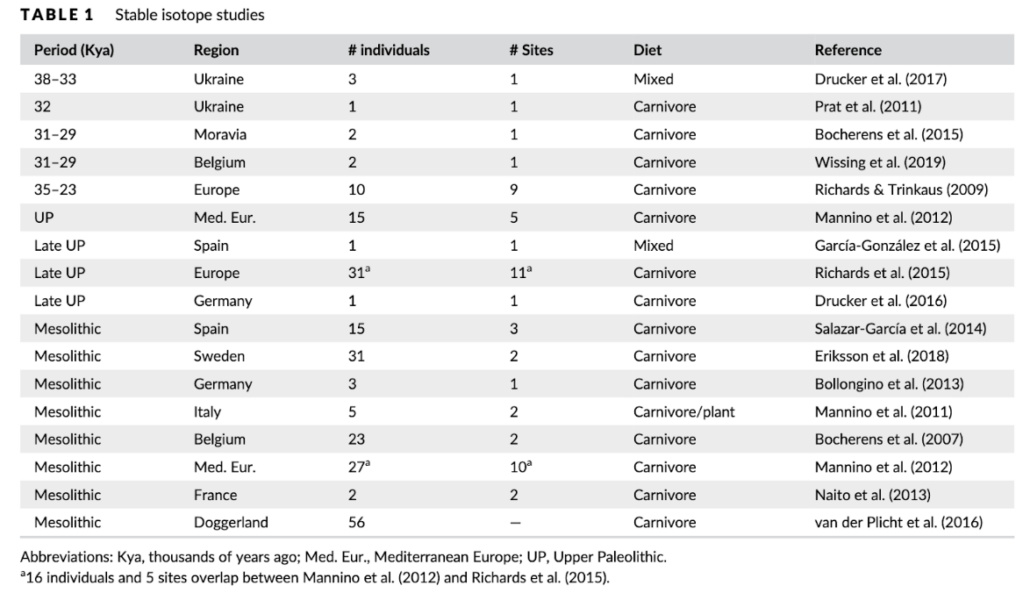
Source: Ben-Dor M, Sirtoli R, Barkai R. The evolution of the human trophic level during the Pleistocene. Am J Phys Anthropol. 2021
Isotope analysis also tells us that early humans not only ate very high levels of meat but ate the meat of other carnivores that we kicked out of the top of the food chain.
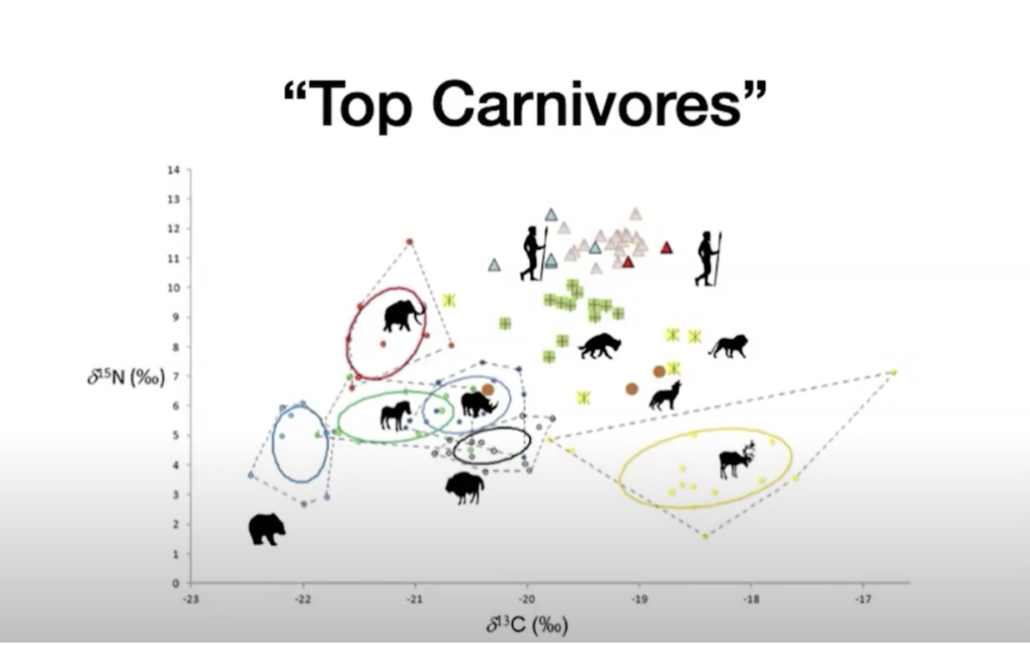
These isotope studies are literally mindboggling for modern nutritional researchers raised in an industrial agricultural food system based on grains and seed “vegetable’ oils.
The idea that humans ate mostly meat just won’t fit into their “humans as plant-based omnivores” narrative.
Here’s an example:
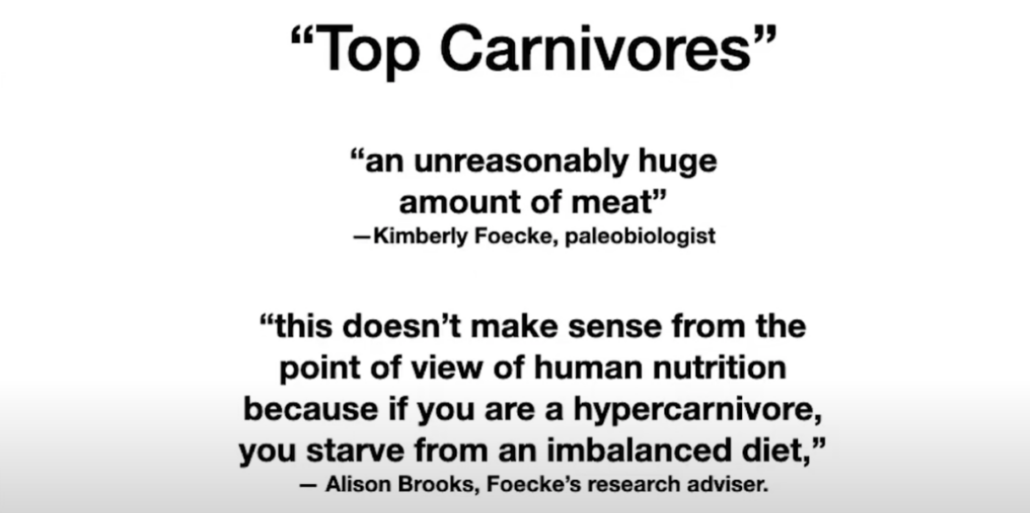
The dogma calling for a “balanced” diet with little meat and lots of plant foods only makes sense if you think of meat as just protein and when there’s access to year-round genetically engineered plant foods.
By “genetically engineered,” we’re referring to all the grains, fruits, and veggies we see in our supermarkets.
Keep in mind that over 70% of the foods we eat today, including fruits and veggies, didn’t exist for the vast majority of human history. And most of the fruits that were available to our ancestors were not the fleshy sugar bombs they are today.
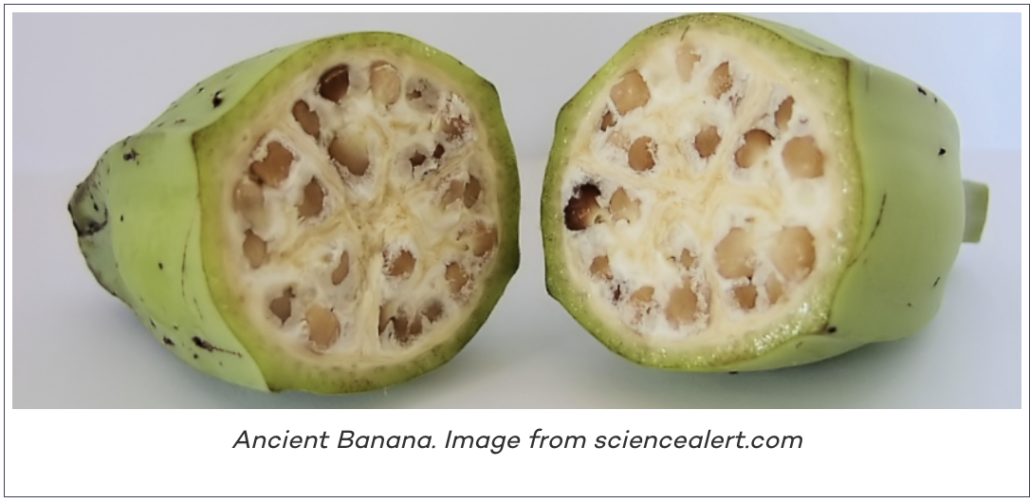
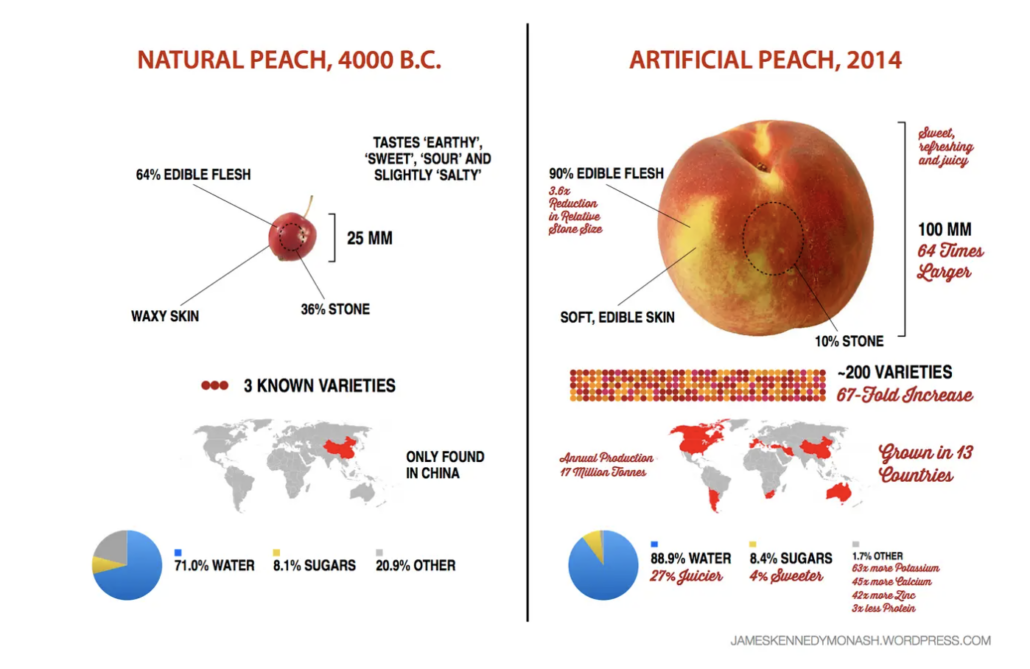
Meat Eating among Traditional Cultures
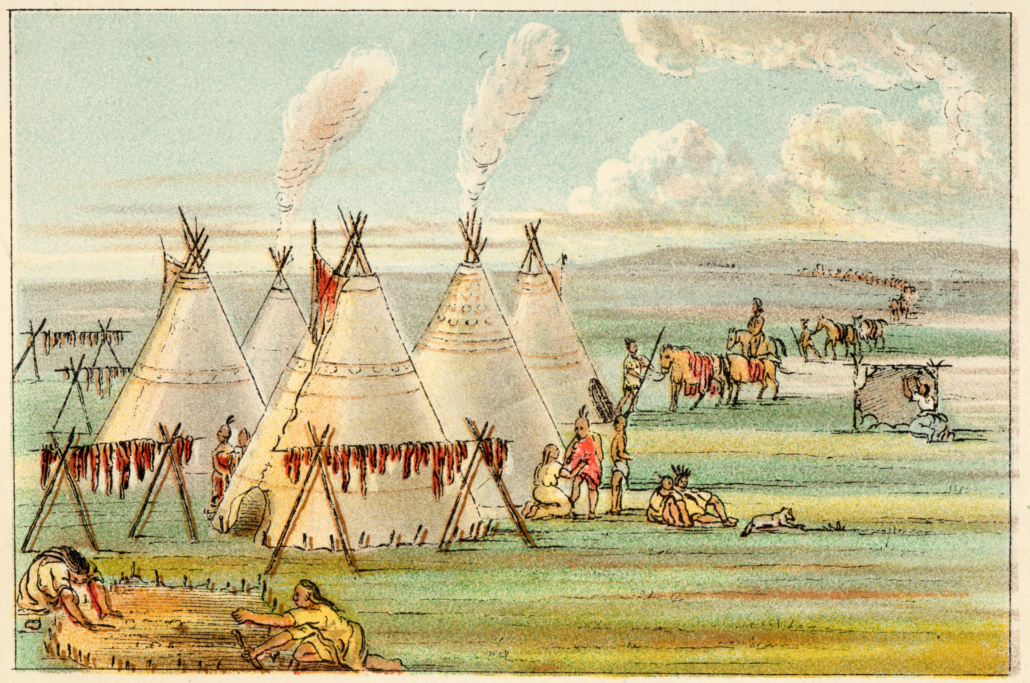
In the early 1900s, a few pioneering researchers studied the diets of traditional cultures around the world and discovered that for the vast majority, meat was a vital centerpiece.
Researcher and Dentist Weston A. Price found that the biggest health gap between native groups and modern Western groups involved fat-soluble vitamins.
Price found that the diets of healthy native groups contained at least ten times more vitamins A, D, E, and K2 than the standard American diet. Vitamin A (as retinol), vitamin D, and K2 are found only in animal fats, including lard, tallow, butter, eggs, fish, and animal parts with fat-rich membranes, especially fish roe, shellfish, and organ meats like liver.
These fat-soluble vitamins are catalysts that facilitate the absorption and metabolic use of all the other nutrients.
Without the vitamins found only in meat, most essential nutrients, including protein, vitamins, and minerals, go unused, and much of their benefits are wasted.
The Inuit
Vilhjalmur Stefansson, a Harvard-trained anthropologist, made similar observations when he lived with the Inuit in the Canadian arctic.
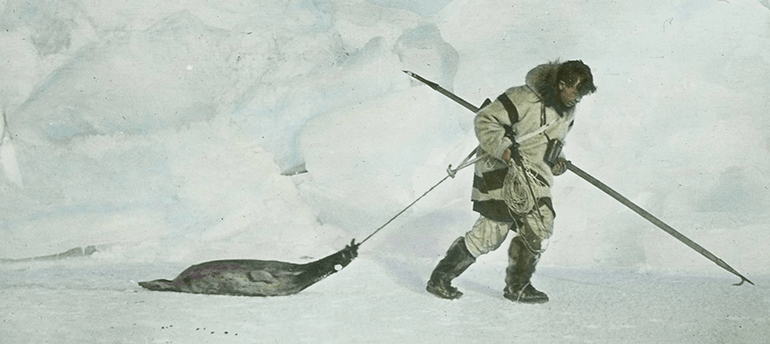
Vilhjalmur Stefansson dragging a seal back to camp. This picture was the cover photo for Stefansson’s book, “The Friendly Arctic,” published in 1921.
The Inuit taught Stefansson to hunt and eat exactly as they did, consuming nothing but fatty seafood and caribou and thriving.
African Pastoral Tribes
Traditional Masai men eat nothing but meat—often three to five pounds each during celebratory meals—blood and half a gallon of full-fat milk from their Zebu cattle. That’s the equivalent of a half-pound of butterfat.
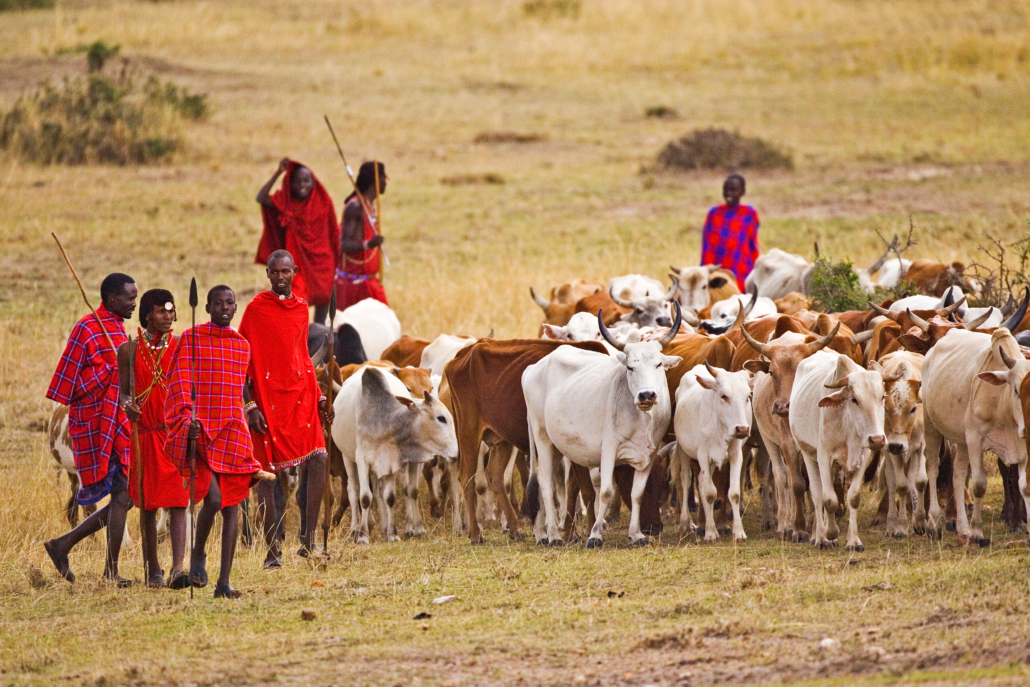
The Maasai get more than sixty percent of their energy from animal fat, yet their mean cholesterol is only about 150 mg/dl (3.8 meq/l), far lower than the average Western person.
Prominent doctor and professor George V. Mann made his life’s work about confronting what he called the “heart mafia,” a group of influential figures and institutions in the American medical establishment that created and defended erroneous links between the consumption of animal fat, high cholesterol, and an increase in heart disease.
When Mann studied the Masai in the 1960s, he found that despite the Masai’s high-fat diet, their blood pressure and weight were about 50% less than they were for Americans.
And they were virtually free from heart disease, cancer, or diabetes—the most deadly diseases of the modern Western world.
American Indians
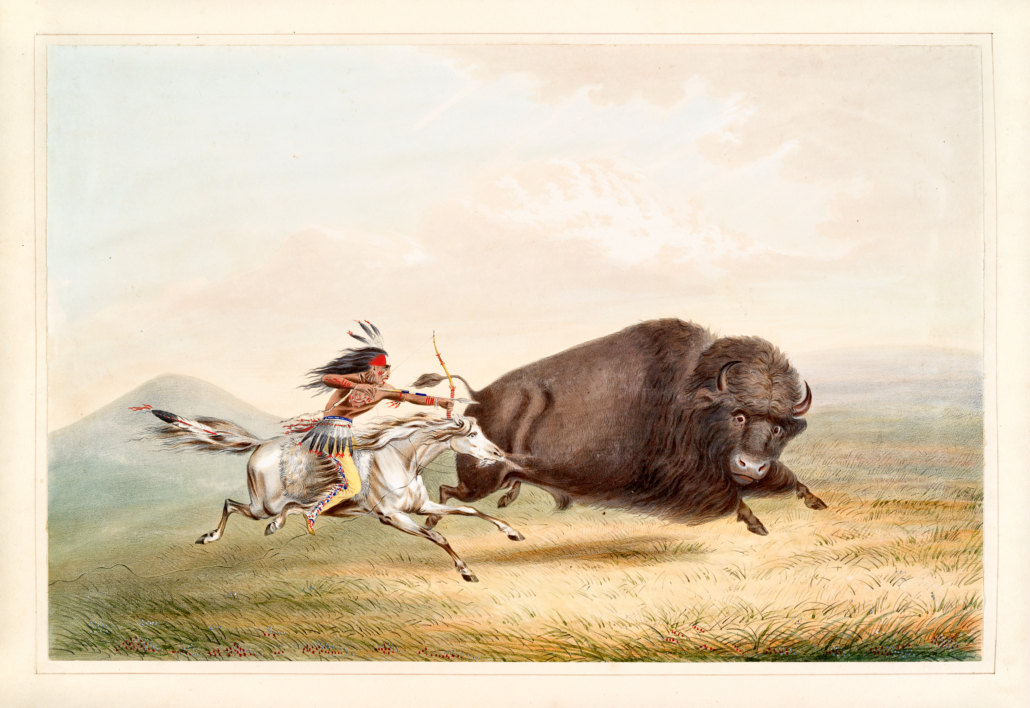
Ales Hrdlicka, a doctor, and anthropologist, surveyed the health of Native American populations in the American Southwest between 1898 and 1905.
Studying Native American elders who lived most of their lives on a diet based on fatty meat from buffalo before their traditional ways of life were destroyed, Hrdlicka found the population to be in incredibly good health.
Malignant diseases were extremely rare, as were dementia and heart disease–he found only 3 cases out of the 2000 people he surveyed.
Hrdlicks also found that there were many more centenarians among the Native Americans (224 per million men and 254 per million women) compared to the whites (3 per million men and 6 per million women).
Stefansson, Mann, and Hrdlicka’s observations of hunter-gatherer and non-Western populations thriving on high-meat diets are only a few examples among many from our anthropological record.
These findings show that ancient cultures not only prized meat, but thrived on it. This is further evidence suggesting that the answer to the question, “Are humans supposed to eat meat?” is a resounding YES.
The Disastrous Alternatives to Eating Meat
In leaving behind our hunter-gatherer way of life humans became dependent on crops, mostly grains. Our diets became far less nutritious and diverse, and our health declined.
Subsisting on the same grains day in and day out leads to a huge uptick in cavities and periodontal disease that we don’t find in meat-eating hunter-gatherers. Tending to crops all day was more laborious and time-consuming than hunting and foraging.
The surplus of consistent calories from grain caused people to settle in one place and populations to boom. When disease struck or a crop failed, huge portions of the population were afflicted. Suffering from iron, fat, and protein deficiencies, people shrunk, both in terms of their brain size and physical stature.
Looking at human fossil evidence, Cambridge Professor Dr. Marta Lahr found that human body weight and brain size stayed relatively consistent for 200,000 years, with the largest Homo sapiens living from 20,000 to 30,000 years ago. Their average weight was between 176 and 188 pounds, with a brain size of 1,500 cubic centimeters. Then, around 10,000 years ago, human brains and bodies got smaller to where we are today. The average human weight is between 154 and 176 pounds, with a brain size of 1,350 cubic centimeters.
“It is not as if farming brought a great improvement in living standards either. A typical hunter-gatherer enjoyed a more varied diet and consumed more protein and calories than settled people, and took in five times as much vitamin C as the average person today.”-Bill Bryson
Today we see the sad legacy of our dependence on agriculture and a diet dominated by plant carbohydrates. It’s ensconced in the misconceived recommendations of the mainstream medical establishment. And it’s trumpeted by so-called food gurus like Michael Pollan, whose infamous statement, “Eat food. Not too much. Mostly plants,” encompasses so much that’s wrong with the way we eat.
A better rallying cry, which echoes those of the vast majority of our human ancestors, is the exact opposite: Eat meat. Not too little. Make sure it’s fatty!
We know that jettisoning meat for industrial “plant-based” foods that make up the Standard American Diet is the root cause of the “diseases of civilization,” including :
- heart disease
- hypertension
- type 2 diabetes
- IBS
- Osteoperosisepithelial cell cancers
- inflammatory diseases (including autoimmune diseases, bowel disorders, osteoporosis, infertility, dementia and Alzheimer’s)
These are called ‘the diseases of civilization’ because they are virtually non-existent in traditional societies that eat a whole foods diet based around animal products.
Each of these diseases has metabolic disorders and chronic inflammation at its root. . In: StatPearls. Treasure Island (FL): StatPearls Publishing; 2023 Jan-. Available from: https://www.ncbi.nlm.nih.gov/books/NBK493173/”/]
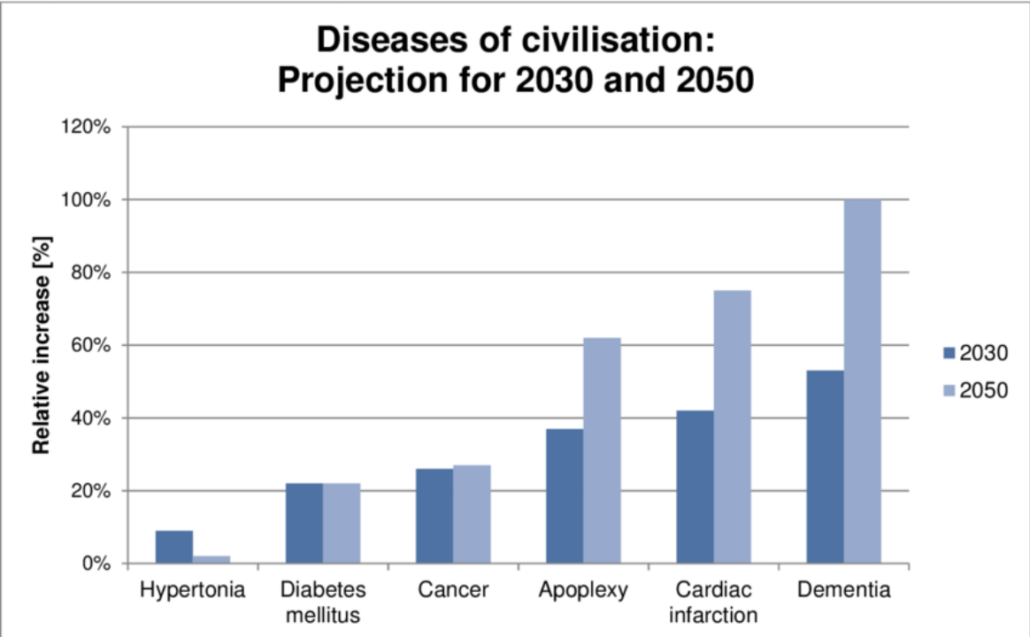
Source: Philipp Jordan, June 2011
Are Humans Supposed to Eat Meat: The Bottom Line
The truth is that our genes and physiology, which are almost identical to those of our hunter-gatherer ancestors, preserve core metabolic processes that are optimized by eating an abundance of nutrient-dense meat and animal products.
Yet, in our modern lives, our genes operate in internal and external environments that are completely different from those we were designed for.
We gorge ourselves on industrial plant foods like grains, vegetable oils, sugars, and frankenfruits. All the while, we stress out and don’t move our bodies enough. So we get sick. And it’s only projected to get worse.
The good news is that we can reclaim our health by realigning our lifestyles to more closely resemble those of our ancestors. An ancestral lifestyle is centered around nutrient-dense meats.
Let meat be thy medicine.












